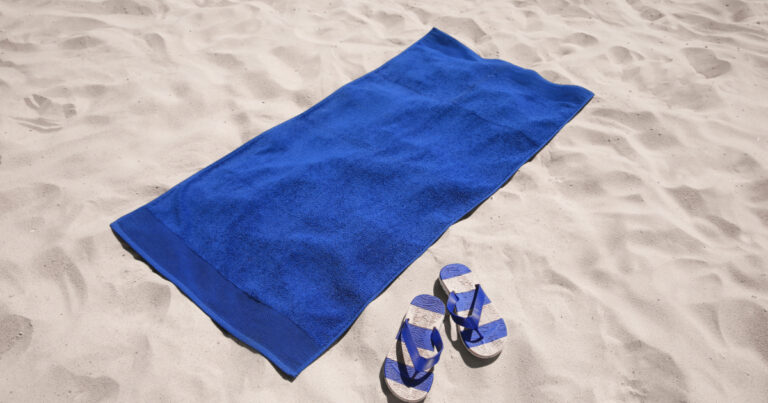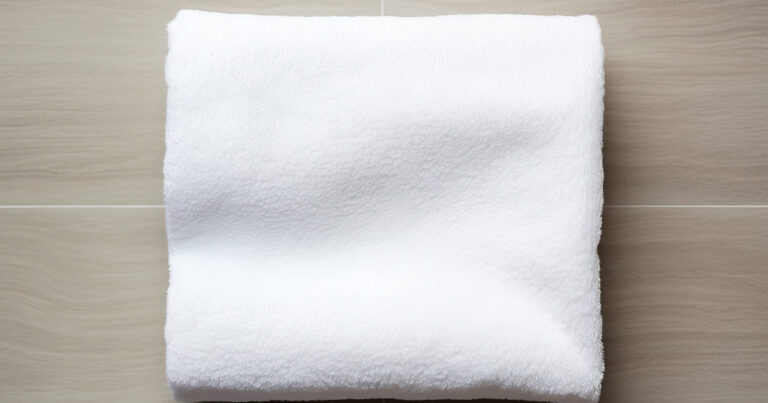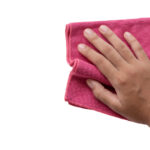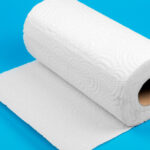A beach towel is a part of any beach day. We use them to lounge on the sand, dry off after a swim, and wrap up in when the breeze picks up. But traditional beach towels come with some downsides. They can be bulky and heavy, attract sand that’s difficult to shake off, and take forever to dry if they get soaked.
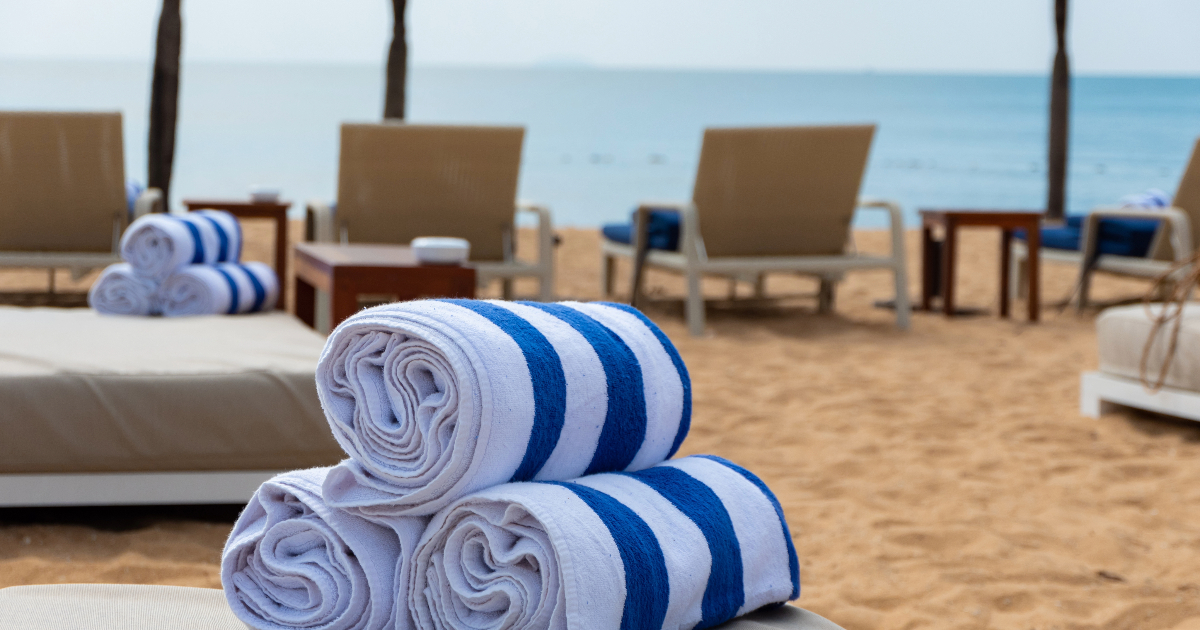
Luckily, there are plenty of creative beach towel alternatives that solve these common problems. These options are often more lightweight, compact, quick-drying, and sand-resistant than regular towels. Many can even be used as a beach coverup or picnic blanket.
Why Consider Beach Towel Alternatives?
Beach towels are a staple for good reason. The plush cotton material feels nice against your skin, and a high-quality towel will soak up water quickly when you’re ready to dry off. But traditional towels come with some drawbacks that make the search for alternatives worth it:
- Bulkiness – Most beach towels are made of thick cotton that takes up a lot of room in your beach bag. This can limit what other items you can bring.
- Heavy weight – A soaked cotton towel can feel quite heavy and cumbersome to carry back home.
- Long dry time – It can take many hours for a cotton towel to fully air dry after being saturated with water.
- Sand magnet – All those cotton loops act like a magnet, trapping sand that’s annoying to shake out. Lingering sand can make a mess.
- No versatility – Beach towels typically just serve one purpose. Once wet, they are uncomfortable to wear as a coverup or use for other activities.
Beach towel alternatives solve many of these common problems. They are designed to be lightweight, highly portable, quick to dry, and sand-resistant. Many can also be worn or used for other purposes, adding versatility to your beach day.
Absorbent Beach Sarongs
A beach sarong is one of the most popular beach towel alternatives. These large, lightweight rectangles of fabric can be wrapped around your body in different ways. Beach sarongs are typically made of soft cotton that absorbs water well. This makes them perfect for drying off and wearing after swimming.
Many beachgoers love sarongs because they are:
- Lightweight and compact – Sarongs can fold up small for portability.
- Versatile – They can be worn, used as a beach blanket, or draped over beach chairs.
- Stylish – Sarongs come in colorful patterns and designs.
- Affordable – High-quality sarongs are available at reasonable prices.
When shopping for a beach sarong, look for ones made of 100% cotton. Cotton offers the most absorbency. Terrycloth cotton or velour sarongs will be the softest and most towel-like.
For the best absorption, opt for medium thickness. Sheer sarongs won’t soak up much water. But overly thick sarongs take longer to dry.
Look for sarongs at least 60″ long so you can comfortably wrap one around your body. For reference, most beach towels measure around 30″ x 60″.
If you’ll use a sarong after swimming, make sure to get one that’s chlorine-resistant to prevent fading.
Popular ways to wear beach sarongs:
- As a strapless coverup dress
- Wrapped around the waist as a skirt
- Over the shoulders as a shawl
Sarongs are seriously versatile beach accessories. They provide coverage, absorbency, and style all in one lightweight piece of fabric.
Key Takeaway: Beach sarongs made of soft, absorbent cotton make excellent towel alternatives and coverups.
Ultra-Absorbent Turkish Beach Towels
Turkish cotton towels have become trendy beach towel alternatives. These thin, lightweight towels are woven from long Turkish cotton fibers that create a super soft, absorbent texture.
Benefits of Turkish beach towels:
- Made of 100% natural cotton
- Highly absorbent and fast-drying
- Ultra-lightweight and compact
- Stylish with fringed edges
- Softer feel after washing
Don’t let the thinness of Turkish towels fool you – they can absorb up to twice their weight in water! The secret lies in the long cotton fibers that efficiently wick moisture.
Many beachgoers love how quickly Turkish towels dry. Lay them out in the sun, and they’ll be ready to pack up in no time. This makes them ideal for multiple dips in the ocean.
The compact size when folded makes these towels easy to stash in your beach bag without taking up too much room. That’s a perk for travelers and beachgoers with limited storage space.
When shopping for a Turkish beach towel, 100% Turkish cotton is ideal. These will be the softest and most absorbent. Look for a longer size around 70″ so you have plenty of room to stretch out.
Fringed edges add a stylish touch while also allowing for airflow to hasten drying time.
Sand-Repellent Beach Mats
Straw mats are a popular beach towel alternative in tropical destinations like Hawaii and the Caribbean. Locals weave these simple mats out of straw or dried palm fronds. They often sell inexpensive beach mats in local beach shops.
Tourists love these easy-to-carry mats because the stiff straw material repels sand. Sand and dirt shake off easily instead of getting embedded like in cotton towels.
Benefits of straw beach mats:
- Lightweight and easy to carry
- Sand resistant and easy to shake out
- Cheap souvenir option
- Leave behind or gift to other travelers
The open weave prevents sand from clinging while still providing a comfortable surface to lounge on. Air circulates freely through the mats to keep you cool.
Being able to easily clean off sand before packing up is a major perk. No more dumping an endless beach blanket out after your beach day!
Straw mats fold, roll, or fold into compact shapes for packing in your beach bag or luggage. They weigh very little, which helps avoid heavy bags.
When shopping for a straw beach mat, check reviews to ensure good quality. Look for tightly woven mats without large gaps or fraying. Well-made mats should hold up for multiple beach trips.
For extra comfort, layer the mat over a sarong or thin beach towel. This creates a padded surface while still reaping the sand-repelling benefits.
Key Takeaway: Simple beach mats keep sand from clinging so you can lounge comfortably without bringing it all home with you.
Microfiber Beach Towels
Microfiber beach towels provide another lightweight, quick-drying beach towel alternative. These synthetic towels are made from polyester or nylon microfiber. They feel smooth and silk-like.
Reasons to try microfiber beach towels:
- Ultra-lightweight and compact
- Absorbs water quickly
- Dries rapidly to prevent mildew
- Resists sand adherence
- Often treated with UV protection
- Comes in fun colors and prints
Microfiber towels absorb up to 7 times their weight in water. The microfiber weave acts like tiny suction cups that suck in moisture quickly.
Excess water easily rolls off the smooth surface instead of pooling like in cotton towels. This enables the towels to dry in just a few hours.
You can vigorously shake out a microfiber towel to release sand after use. The sand won’t get stuck in all the crevices like a cotton towel.
The lightweight fabric folds down very small for travel-friendly portability. Many come with matching pouches or bags.
Look for oversized microfiber beach towels at least 70″ long to provide plenty of drying surface.
While microfiber doesn’t offer the plushness of cotton, the quick-dry functionality and sand resistance make these excellent beach towel alternatives.
Absorbent Beach Sarongs
A beach sarong is one of the most popular beach towel alternatives. These large, lightweight rectangles of fabric can be wrapped around your body in different ways. Beach sarongs are typically made of soft cotton that absorbs water well. This makes them perfect for drying off and wearing after swimming.
Many beachgoers love sarongs because they are:
- Lightweight and compact – Sarongs can fold up small for portability.
- Versatile – They can be worn, used as a beach blanket, or draped over beach chairs.
- Stylish – Sarongs come in colorful patterns and designs.
- Affordable – High-quality sarongs are available at reasonable prices.
When shopping for a beach sarong, look for ones made of 100% cotton. Cotton offers the most absorbency. Terrycloth cotton or velour sarongs will be the softest and most towel-like.
For the best absorption, opt for medium thickness. Sheer sarongs won’t soak up much water. But overly thick sarongs take longer to dry.
Look for sarongs at least 60″ long so you can comfortably wrap one around your body. For reference, most beach towels measure around 30″ x 60″.
If you’ll use a sarong after swimming, make sure to get one that’s chlorine-resistant to prevent fading.
Popular ways to wear beach sarongs:
- As a strapless coverup dress
- Wrapped around the waist as a skirt
- Over the shoulders as a shawl
Sarongs are seriously versatile beach accessories. They provide coverage, absorbency, and style all in one lightweight piece of fabric.
Key Takeaway: Beach sarongs made of soft, absorbent cotton make excellent towel alternatives and coverups.
Reusable Velour Towels
Velour towels have a soft, plush feel that makes them a comfortable beach towel alternative. The velvety texture comes from the velour knit fabric made of synthetic materials or cotton.
Benefits of reusable velour towels:
- Ultra-soft and pleasant next to skin
- Highly absorbent material
- Quick to dry after use
- Available in vivid colors and prints
- Can be washed and reused instead of disposables
Velour is actually two pieces of fabric knit together. The looped velour side absorbs water well while the flat side allows water to disperse for fast evaporation.
This double-sided construction makes velour an absorbent yet quick-drying material. And it feels oh so soft when it’s time to curl up on the sand.
Reusable velour towels hold up well to repeated washing. Avoid bleaches or fabric softeners that can damage the velour texture. Wash in cold water and tumble dry on low.
Velour won’t repel sand as well as microfiber or straw. But the soft texture is worth dealing with a little sand for many loungers.
For families or groups, get velour towels in multiple fun colors and prints. They also make great personalized beach towels.
Sand-Free Beach Mats
Straw mats are a popular beach towel alternative in tropical destinations like Hawaii and the Caribbean. Locals weave these simple mats out of straw or dried palm fronds. They often sell inexpensive beach mats in local beach shops.
Tourists love these easy-to-carry mats because the stiff straw material repels sand. Sand and dirt shake off easily instead of getting embedded like in cotton towels.
Benefits of straw beach mats:
- Lightweight and easy to carry
- Sand resistant and easy to shake out
- Cheap souvenir option
- Leave behind or gift to other travelers
The open weave prevents sand from clinging while still providing a comfortable surface to lounge on. Air circulates freely through the mats to keep you cool.
Being able to easily clean off sand before packing up is a major perk. No more dumping an endless beach blanket out after your beach day!
Straw mats fold, roll, or fold into compact shapes for packing in your beach bag or luggage. They weigh very little, which helps avoid heavy bags.
When shopping for a straw beach mat, check reviews to ensure good quality. Look for tightly woven mats without large gaps or fraying. Well-made mats should hold up for multiple beach trips.
For extra comfort, layer the mat over a sarong or thin beach towel. This creates a padded surface while still reaping the sand-repelling benefits.
Key Takeaway: Simple beach mats keep sand from clinging so you can lounge comfortably without bringing it all home with you.
Sheer Sarongs
Sheer sarongs make great lightweight coverups after swimming and practical beach towels in warmer climates. The gauzy fabric easily packs into beach bags without taking up much space.
Reasons to try sheer sarongs:
- Ultra lightweight and portable
- Provide subtle coverage when wet
- Dry quickly after a swim
- Versatile as a beach towel or scarf
- Often inexpensive
- Protect skin from the sun when dry
Look for sheer sarongs made of polyester or nylon fabric. These synthetic materials dry fast and resist damage from saltwater.
Cotton sarongs lose their shape and start looking ragged after some beach and pool use. Polyester or nylon will maintain their silky texture.
Select a longer sarong in the 75″-80″ range. This gives you enough fabric to comfortably wrap up in or lay on the sand.
Sheer sarongs won’t provide as much absorbency for drying off as cotton or velour fabrics. But the lightweight material makes up for it in portability.
Let a soaked sheer sarong dry right on your body to create a stylish coverup. The wet fabric will cling in all the right places while obscuring just enough.
Oversized Beach Towels
For those who love to stretch out on a plush beach towel, an oversized option is a comfy alternative to standard sizes. Oversized beach towels measure at least 40″ wide by 80″ long.
Benefits of oversized beach towels:
- Provide extra lounging room
- Reinforced edges prevent fraying
- Softer feel from longer cotton fibers
- Absorbent, quick-drying cotton
With the extra surface area, oversized beach towels are perfect for sprawling out comfortably on the sand. No more laying half on the towel and half off!
They are also ideal beach blankets for families. Kids and adults can all fit on one oversized towel.
Look for oversized towels made of 100% Turkish or Egyptian cotton. These types use longer cotton fibers for exceptional softness and absorption.
Well-constructed oversized beach towels have reinforced edging to prevent the towel from unraveling over time.
Carry a foldable beach tote to stash your oversized towel and other essentials. A large towel won’t fit in small bags.
Round Beach Towels
For a playful beach towel, try a round style. These circular towels add whimsical style to any beach day.
Why opt for a round beach towel?
- Fun, unique look
- No corners to bunch up
- Easier to stake into sand
- Often highly portable
- Provides ample room for one lounger
Round beach towels are a great choice for teenagers and young adults seeking stylish, Instagrammable beach gear.
The unusual shape also prevents the awkward sitting on folded corners that can happen with square beach blankets.
Some round beach towels have a central pocket and backpack straps. After your swim, fold it into the pocket, strap it on your back, and go!
Microfiber and Turkish cotton fabrics are commonly used in round beach towels for their lightweight, quick-drying properties.
For a splurge, spring for ornate embroidery or fringe around the edges of the circle. Tassels up the trendy vibes.
Waterproof Beach Blankets
A waterproof beach blanket is a handy alternative if you want something that will stay put and keep you dry while lounging on the sand. These PEVA or nylon blankets are thin yet durable.
Reasons to try a waterproof beach blanket:
- Keeps you and your belongings dry
- Sand won’t stick due to surface barrier
- Easy to shake sand off and fold up
- Often have stakes to anchor in place
- Provides cushioning over hard sand
The impermeable barrier keeps moisture from seeping through. No wet butt if you sit on a damp spot!
Waterproof blankets won’t absorb water, so they aren’t ideal wraps for drying off. But they make excellent ground cover.
Look for lightweight blankets that fold into an attached pouch for easy transport. Thicker plastic tarps are bulkier.
Anchor loops allow you to stake down the corners so the blanket stays put on windy beach days.
While not as cozy as cotton, a waterproof blanket keeps your beach lounging clean and dry.
Swim Coverups
Using your swimsuit or rash guard as a beach towel is an easy alternative for lightweight drying and covering up post-swim.
Benefits of using swim coverups as towels:
- No need to pack separate towels
- Swim fabrics shed water and dry quickly
- Provides built-in coverage when wet
- Often made of chlorine-resistant material
- Stylish option for beach bars and strolls
Rash guards made of spandex and nylon dry rapidly after being in the water. The stretchy material clings comfortably to your body when soaked.
Many swim coverups like sarong pants and wraps are designed to get wet while still maintaining opacity.
Swim leggings and shorts act like a second skin when wet. Wring them out then let them dry right on your body.
Look for coverups with UPF 50 sun protection. The protective fabric will shield your skin after exiting the water.
For quick dips, packing a coverup and skipping the towel achieves both drying and coverage with one piece.
Terrycloth Beach Robes
Who doesn’t love the luxury of wrapping up in a plush robe after bathing? Bring that spa experience to the beach with a terrycloth robe.
Reasons beach robes make great towel alternatives:
- Made of highly absorbent terrycloth
- Lightweight cotton styles available
- Hooded for protecting hair and skin
- Cozy comfort for lounging and strolls
- Often designed as coverups
When shopping for a terrycloth robe, look for ones made with at least 90% cotton. Avoid robes with too much polyester that won’t absorb as well.
Lightweight cotton terry or waffle weave robes dry quicker than thick, dense plush options. But you can’t beat the comfort of an ultra-soft luxury robe.
For the beach, a hooded robe protects wet hair and provides shade. Look for longer robes that cover your swimsuit for more privacy.
Consider getting two robes in different colors – one for each member of a couple. Terrycloth robes also make thoughtful bridesmaid gifts.
At the end of long beach days, treat yourself to the comfort of a terry robe as you head home.
Wearable Beach Towels
For a handy 2-in-1 option, check out wearable beach towels. These unique towels convert into strapless dresses, hoodies, shifts, and ponchos.
Benefits of wearable beach towels:
- Provides built-in coverage for walks
- Easy to slip on when wet
- Dries on your body after swimming
- No need to pack a separate coverup
- Compact fold-up design
- UPF 50+ sun protection
Wearable beach towels act as your towel and tunic dress all in one. Slip one over your wet swimsuit and you’re instantly ready for lunch.
The fabrics are designed to dry quickly and provide opacity even when soaked. No see-through surprises.
Look for wearable towels made of microfiber or terrycloth. These materials offer both absorption and quick drying.
For convenience, buy a wearable towel with UPF sun protection. This shields your skin both wet and dry.
Oil-Absorbing Beach Towels
Some innovative companies now make beach towels specially designed to absorb oil. These are must-have accessories for beach volleyball players and sunbathers using lotions and tanning oils.
Ideal uses for oil-absorbing beach towels:
- Removes excess sunscreen and tanning oil
- Absorbs grease to keep towels cleaner
- Perfect take-along for beach volleyball
- Wipes off Oil persistent sand that sticks to feet and legs
- Cleaner option for outdoor yoga and Pilates
Leftover sunscreens and oils can leave behind messy residue on regular towels. Oil-absorbing towels avoid this with textured fabrics that soak in grease.
Look for polyester microfiber infused with a mineral called silica gel. This gives the towels oil-grabbing capabilities.
The improved absorption also helps the towels dry faster than regular cotton. Nobody wants a greasy damp towel in their beach bag!
After wiping excess product off your skin, let the oil-absorbing towel work its magic before stashing it away.
Sand-proof Beach Blankets
If keeping sand far away is a priority, look for innovative sand-proof beach blankets. These clever designs prevent sand from clinging to the surface.
What makes beach blankets sand proof?
- Two-layer mesh construction lets sand fall through
- Waterproof barriers sand can’t stick to
- Raised edges trap sand off the lounging surface
- Ultra portable sizes for easy shaking out
- Sand-resistant fabrics like polyester and nylon
Sand-proof blankets allow sand to pass through internal holes into an empty layer underneath. This leaves just the clean top layer to lounge on.
Other designs use waterproof fabric like parachute nylon. Sand won’t cling to these non-absorbent surfaces.
Look for multi-use blankets with corner pockets and backpack straps. They easily convert into convenience carrying cases.
While sand-proof, the thinner fabrics of these blankets don’t offer much cushioning. Bring a sarong or towel for padding.
Outdoor Picnic Blankets
Why limit picnic blankets to outdoor meals? An oversized, water-resistant blanket works perfectly for spreading out and lounging on the beach.
Reasons to use a picnic blanket:
- Oversized for roomy comfort
- Corner loops to secure in wind
- Cushioned padding for hard sand
- Weather-resistant backing
- Folds into convenient totes
- Fun patterns and designs
Outdoor picnic blankets are designed to withstand use on the ground and hold up in moisture. These are ideal traits for the beach too.
The padding insulates you from the cooler temperature of damp sand. No more towel laid right over wet sand!
Look for an oversized picnic blanket at least 60″ x 80″ to have ample space for lounging and playing beach games.
If winds are strong, you can secure picnic blanket corners with built-in loops and stakes.
When it’s time to leave, fold your picnic blanket away into its portable tote. No sand shakes required!
Absorbent Beach Pareos
A pareo is a large square of lightweight, semi-transparent fabric originally used in Polynesian cultures as a body wrap. Beach pareos make excellent towel alternatives.
Why use a pareo instead of a towel?
- Lightweight cotton or rayon fabric
- Easily adaptable as clothing
- Provides lightweight coverage when wet
- Compact size folds up small
- Often decorative prints and details
- Simple stylish alternative to bulky towels
Made of natural fibers like cotton, rayon, and silk, pareos offer softness and breathability.
The thin, gauzy fabric doesn’t provide much drying capability. But it absorbs just enough water to cover up after a quick dip.
Tie or wrap a beach pareo into a strapless dress, skirt, headwrap or shawl. The possibilities are endless!
Pareos come in vibrant tropical prints that instantly put you in a summer state of mind.
For beach trips, focus your pareo selection on those featuring lightweight cotton or rayon. Save the silks for evening coverups.
Other Handy Beach Towel Tips and Alternatives:
- Pack a small microfiber camping towel in your beach bag for a backup or quick dry-off option.
- Try a large cotton bandana as a compact absorbent towel. The versatile squares can also substitute as picnic blankets, sun shades, and head wraps.
- Yoga towels have a similar thin, absorbent texture as beach towels but fold up much smaller for travel-friendly transport.
- For kids, hooded towel ponchos eliminate the need for a separate towel and coverup after swimming. Look for microfiber designs that shed water quickly.
- Old beach towels can find new life as rags and napkins for outdoor meals and projects. Keep some in the car for cleaning up after beach and camping trips.
- Check your hotel before visiting a beach destination. Many resorts offer oversized pool towels that will work nicely on the beach and save packing space.
Key Benefits of Beach Towel Alternatives
Beach towel alternatives provide a range of benefits that solve common problems with traditional towels:
- Lightweight – Most alternatives weigh less when wet and dry than regular cotton towels. They are easier to transport.
- Compact – Alternative towels, sarongs, and mats fold up smaller to pack light.
- Quick-drying – Fewer damp items in your bag mean less chance of mildew smells. Fast-drying fabrics like microfiber and nylon shed water.
- Sand-resistant – Say goodbye to towels covered in stubborn sand! Alternative fabrics and textures prevent sand from clinging.
- Multipurpose – Many options like sarongs and robes pull double duty as towels and coverups.
- Stylish – Beach towels get to show off your personal style. Fun prints and colors up the beach fashion game.
- Affordable – You can find simple, inexpensive alternatives like straw mats and basic sarongs.
FAQs
What are some good beach towel alternatives?
Some top alternatives include sarongs, microfiber towels, Turkish towels, sand-free mats, beach blankets and picnic blankets, coverups, robe and poncho towels.
What material makes the best beach towel?
For absorbency, cotton and microfiber are ideal beach towel materials. For compact portability, microfiber and nylon fabrics work well. And for super softness, look for velour and terrycloth towels.
Are microfiber beach towels better than cotton?
Microfiber beach towels dry faster and are more sand resistant than cotton. But cotton offers better softness and absorbency. Choose based on your priorities – portability or plushness.
What is a good size for a beach towel?
Standard beach towels are around 30 x 60 inches. For ample drying and lounging room, look for oversized beach towels at least 35 x 70 inches up to 40 x 80 inches.
How do you wash beach towels?
Most beach towels can be machine washed in cold water and tumble dried on low. Avoid using fabric softener and bleach. Wash in a mesh bag if the towels prone to lint.
Can you use a bath towel as a beach towel?
While you can use a bath towel, beach towels are larger with more surface area. Bath towels also tend to be thicker and take longer to dry out. Light, quick-drying beach towels work better.
What is the material in Turkish beach towels?
Authentic Turkish beach towels are made of long-staple Turkish cotton. This absorbent yet lightweight cotton makes the towels soft, thin, and quick to dry.
Conclusion
Ditch the bulky beach towel and explore convenient alternatives for your next waterfront adventure. Any beach lover can find options that solve common towel woes like sand, weight, drying time and lack of versatility.
Beach sarongs, microfiber towels, stylish coverups, sand-proof mats and blankets all offer smart ways to stay comfortably dry. And many pull double duty as towels and as stylish defense against chill ocean breezes.


